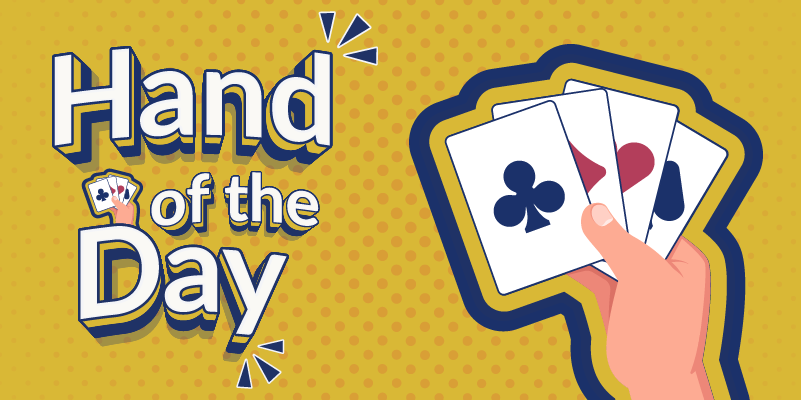



This conundrum was written by Jeff Bayone and was originally published in the book, A Taste of Bridge - you can find out all about it further down the page.
With this example, try to:
The Bidding
Think it through. Start with South’s shape. It is 4-4-3-2. Remember always to say it longest to shortest, so the sound of thirteen cards divided four ways becomes very familiar. Next, count the HCP: they come to 15. Right shape, right HCP (15-17) for a 1NT opening bid. Open 1NT.
Let’s have West pass.
Same process with North: 4-3-3-3 and 7 HCP. With no extra points for length, North adds her 7 to the maximum of 17 that partner could have for her 1NT opening bid. The total falls short of the 26 needed to try for game. North passes.
East also passes.
A bid followed by three passes ends the auction. 1NT by South becomes the final contract. Here is the whole auction in a diagram
Since South is the declarer, West makes the opening lead and chooses the ♦K.
Before dummy comes down, what does everyone already know about West's diamond holding?
They know that he has at least four diamonds, three of which should be in sequence, headed by the ♦K.
North tables the dummy. Say dummy's shape: 4-3-3-3.
The Strategy
You are the declarer. To start, identify your sure winners, the tricks you’re starting with. Three bare aces in hearts, diamonds and clubs. What about spades? With four in length and the top four honors between the two hands you will make four spade tricks, provided you take care to cash (unblock) the ♠K first before using your remaining spot card to bridge over to North’s holding. You should take three aces and four spade tricks for your required total of seven. There is little chance for an eighth trick, especially if West began with five diamonds.
The Technique (How will you do it?)
Win the first trick. When tackling the spade suit, think ‘honors from the short side first’. The North hand has three honors in a row, the South hand one. The North hand has its ‘ducks in a row’. Get the ‘odd duck’ out of the way first.
Trick 2 should contain the ♠K. Trick 3: Use that remaining ♠6 to bridge across to those ducks… er, spades. Seven tricks are now yours.
The complete hand was:
A whole new approach to the world’s most popular card game, developed and tested with thousands of students at North America’s largest bridge school. With the six easy lessons in this book, you’ll get a taste of bridge, and be able to start playing with your friends. And who knows, maybe you’ll develop a taste for bridge!




Think there is a typo. I think you meant K spades.
you're right, Trick 2 should contain ♠K 🙂